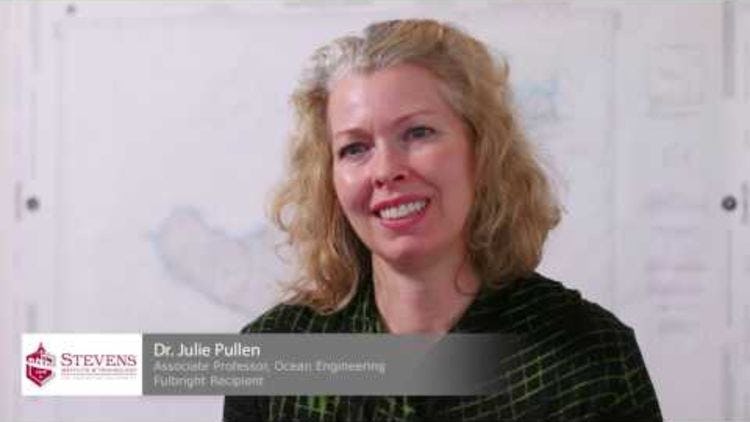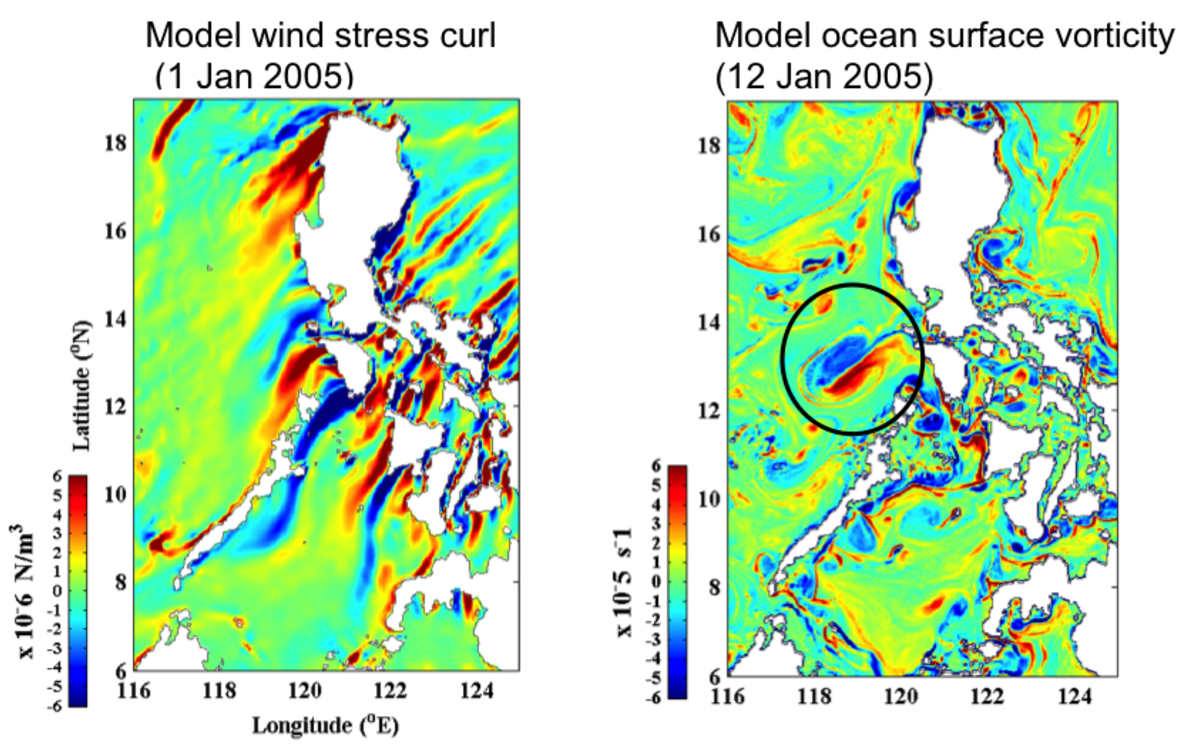Stevens Fulbright Researcher Deciphers Extreme Weather, Aids Homeland Security
Dr. Julie Pullen links air and sea models to crack the extreme-weather code from Asia to Manhattan — and finds some surprising answers
Imagine a killer, super-Sandy-sized hurricane bearing down on a coastal city with just a few days of advance warning. How will the resulting rain, wind, waves and tides affect everything from drinking water to subway service? How should residents and planners prepare?
Stevens Institute of Technology ocean engineering professor Julie Pullen can help.
Now imagine a canister of toxic substances, released during an 18-wheeler crash on FDR Drive — or, worse, released by a terrorist's helicopter, drone or plane above the city. Few would be able to judge which neighborhoods were in danger as wind rapidly dispersed the poison.
Yet, once again — with a little information about the time of year and the day's weather — Pullen can make a very strong educated guess.
"Julie is one of those rare individuals who is equally comfortable tackling hard science questions about how the ocean and atmosphere interact and leading high-profile, impactful international policy forums," notes Alan Blumberg, director of Stevens' Davidson Laboratory and a longtime collaborator.
Now Pullen, a leading expert on fluids, winds, oceans and weather — and, importantly, the ways in which those systems continuously interact with one another — has received her latest significant honor, a Fulbright scholarship to travel, educate and perform research abroad. Beginning next January, she will spend five months teaching at the University of the Philippines Diliman (UPD) and refining models and forecasts that will save lives.
"The timing of your visit coincides with expanding regional, country and university efforts to advance prediction and monitoring of natural hazards," noted UPD professor Olivia Cabrera, who will collaborate in the creation of new meteorology and other coursework at the university, in the official invitation to Pullen to join UPD's faculty as a visiting professor. "And I’m confident that we can achieve so much more by your presence."
Discovering how mountain winds fuel killer storms
Typhoons and heavy rainstorms are common in the Philippines, creating floods and landslides and necessitating evacuations. As one of the world's ten nations most impacted by extreme weather-related disasters, its government has begun building an early-warning system that can predict floods and warn residents in affected areas. But there's still more to be done.
Pullen was drawn both by the urgency of the threat and by scientific curiosity.
"Island environments are really interesting focal points for coastal urban sustainability challenges," she notes.
During previous research with the U.S. Office of Naval Research (ONR) in the region, Pullen had already unlocked a key dynamic for the first time: the shapes of the islands of the Philippines, it turns out, significantly influence the weather that swirls around them. Wind jets passing through the islands, shaped by mountains, send huge, deep whirlpool-type systems swirling out to sea, driving ocean currents and affecting everything from local deadly rainfall events to regional fisheries and global weather.
"When strong winds blow through island systems," she explains, "they create patterns of intensified winds in the gaps between islands and weaker winds in the lees of the islands. You get these strong-weak-strong-weak patterns, and the ocean responds really strongly to that type of forcing" with large-scale eddies.
It was a remarkable insight, connecting several dots. Forecasters, taking into account these new findings, can now more accurately predict strong downpours in the region year-round by applying integrated models that account for the influence of air temperature, river flow, ocean salinity and other variables on one another.
The tremendous volume of water pouring into rivers during storms, for example, empties into the South China Sea, lowering its salinity and stratifying the near-shore ocean water and preventing heat from being naturally generated. This, in turn, creates new dynamics, triggering weather effects that may now be more knowable.
"Putting that whole picture together is a really exciting aspect of this work," enthuses Pullen, "not just the modeling but bringing together those observational data sets that include the rain gauges, the river discharge data, satellite images, as well as new and emerging measurements [such as] radar measurements of rainfall."
Following her Fulbright residency, Pullen will perform an ONR field research trip, continuing ongoing Stevens collaborations with the Navy as it maps oceanographic conditions and collects data in the region.
And that broader project, assisted by NASA measurements of the atmosphere, will soon help scientists worldwide build better models to predict extreme weather in their local areas — one reason nations as far afield as Australia, the United Kingdom and Japan are planning to send government research vessels to assist.
"The tropics are key. They're a 'hot spot' for propagating features that influence the whole planet," explains Pullen.
Weather as security information
In the wake of the 2001 terrorist attacks on New York and Washington, D.C., Pullen has also turned her expert knowledge of weather systems to a number of security issues, including research on Manhattan wind patterns and the 2011 Fukushima, Japan radiation-release disaster.
As a Fellow at Stanford's Center for International Security and Cooperation, she was one of the first to link air/sea models to homeland security studies predicting how chemical, biological, radiological and nuclear substances would spread in those cities. She also served, for a time, as director of Stevens' Maritime Security Center, a Department of Homeland Security-affiliated National Center of Excellence, and plans to revisit the work soon in the metropolitan New York region.
"There's a surprising lack of data about dispersion in urban environments," she points out. "So I'm looking to work on that, partnering with the emergency-response community."
In addition to planning new experiments updating the science — releasing harmless gases or powders on the ground or in the air in the city, then tracking their movements — Pullen also hopes to train local response agencies to make field observations that can also help improve forecasting and future planning for potential disasters.
"It does take a lot of work with local partners to be able to predict on a very local scale," she notes. "The work that's been done here in the Davidson Laboratory by Alan Blumberg and colleagues has really pioneered that path to show street-scale, neighborhood-scale impacts. This really shows us the way forward."
Teaching scientists, forging collaborations
After returning to Stevens from the Fulbright, she'll continue to balance research with teaching.
"I enjoy teaching," she says. "I enjoy the dialogue, I enjoy the conversation and I enjoy seeing students develop as independent thinkers. That's just a great thrill to me. I tend to really emphasize conceptual insights from them to be able to make those leaps and apply those ideas in different contexts. I think that is the essence of learning."
Pullen will also continue a busy schedule of international travel and advocacy, bringing together scientists from diverse backgrounds and nations in the collective interest of creating ever-better forecasts and public awareness.
"All of these models have extraordinary fidelity," she says, "but they have to be connected. [We] have to exchange the information, and I think that's the biggest challenge of the field that I work in right now."




